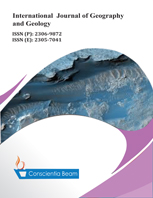Predicting Traffic Data in GIS using Different Neural Network Methods
DOI:
https://doi.org/10.18488/10.v11i2.3166Abstract
Traffic is one of the most influential factors in choosing the route to reach the destination. It can be said that a large percentage of people prefer a long but low traffic route than a short route with heavy traffic. Therefore, traffic is a very determining factor in societies, especially in metropolitan areas. The issue of traffic forecasting is another important factor in the field of traffic. In such a way that the traffic of the coming days can be predicted based on the traffic of the previous days. In this paper, traffic forecasting in the coming days is done using a neural network algorithm based on the collected traffic data. Traffic forecasting is performed using Basic Neural Network methods, Feed-forward Levenberg-Marquardt, Conjugate Gradient Neural Network and Bayesian Neural Network. The results of the forecast are then compared with real observations. The results show that the Feed-forward Levenberg-Marquardt method predicts traffic data with 81.59% accuracy, which is the most accurate method among the others. The accuracy of Bayesian Neural Network, Conjugate Gradient Neural Network and Basic Neural Network methods is 81.55, 81.50 and 75%, respectively. Regression values of 24 hours a day were also estimated and it was found that the proximity of input and output values in the Basic Neural Network method is approximately 80%. This parameter was obtained 69.69%, 69.71% and 69.87% for three Feed-forward Levenberg-Marquardt, Conjugate Gradient Neural Network and Bayesian Neural Network respectively.

